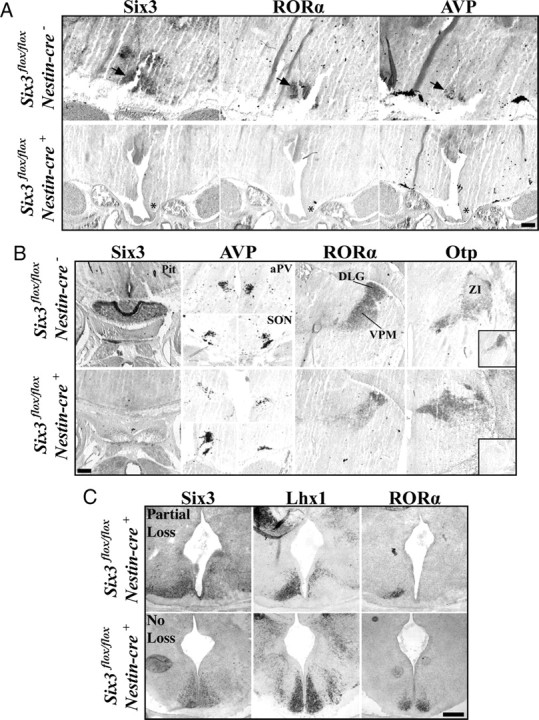Figure 8.

Six3 is necessary for SCN formation. Expression of Six3, RORα, AVP, and Otp in Six3flox/flox/Nestin-cre+ compared with Six3flox/flox/Nestin-cre− littermate controls. A, Expression of Six3, RORα, and AVP in SCN (arrows in top) are completely eliminated in conditional Six3 knock-outs, shown at E18.5 (asterisks). B, Marker analysis of the pituitary, hypothalamic (aPV and SON), and thalamic (dLG, VPM, and ZI) nuclei show that complete disruption of Six3 leads to loss of the pituitary, whereas nuclei surrounding the SCN remain intact in Six3flox/flox/Nestin-cre+ experimental animals. Bottom right inset in Otp column represents adjacent section for Six3 expression. C, Variability in the targeted elimination of floxed Six3 in E15.5 mice. Expression of Six3, Lhx1, and RORα in Six3flox/flox/Nestin-cre+ mice that showed either partial loss (top) or no loss (bottom) of Six3. Top, Unilateral Six3 deletions lead to unilateral loss of RORα and Lhx1. Bottom, Mice that retain Six3 expression still express both Lhx1 and RORα. Scale bars, 250 μm.
